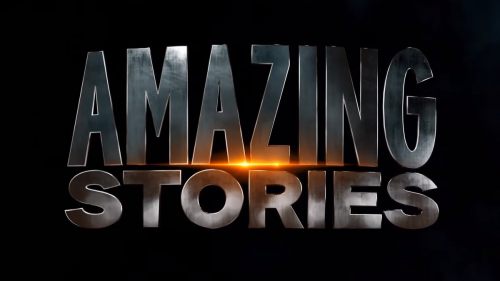Did Lacombe Get It Wrong?: Three Recent Observations Regarding CLOSE ENCOUNTERS OF THE THIRD KIND
Thanks to a recent week-long run at the Alamo Drafthouse here in Austin a couple months ago, I was able to take my two sons (ages 7 and 12) to see Close Encounters of the Third Kind (1977) on the big screen. I had been wanting to show them the film on Blu-ray for some time; however, the opportunity to see it in a theater was too tempting to pass up. In watching the film again, I noticed several things that stuck with me in the weeks that followed. Exceptional art is going to spur thought and reveal new details with each subsequent encounter.
Here are three things that made a lasting impression on me during this last viewing.
1. The Indianapolis Air Traffic Control Scene
Early in the film, a lone air traffic controller is communicating with two flights outside of Indianapolis. The pilots report an unknown phenomenon in the skies. I’ve always been enamored with this scene but it really stood out for me during this particular viewing. The degree of focus and tension during these few minutes is extraordinarily palpable. We’re a fly on the wall listening to air traffic chatter, only a small portion of which we can actually understand. It sounds mostly like a foreign language. It’s precisely those fleeting moments of comprehension that stimulates the depiction within our own imagination.
The other air traffic controllers gather around as the monotone exchange between parties continue. Spielberg doesn’t attempt to dumb this down or make the exchange crystal clear. I still don’t understand half of what they’re saying but the inflections and urgency of their voices, the alarms going off, and the careful and meticulous movement of the camera makes this one of the more tension-riddled scenes of the film.
2. Translation Of A Translation
One of the qualities inherent to CEOTTK is the over-arching international effort to gather evidence of extraterrestrial encounters around the globe. This isn’t simply an American encounter, it’s an earthly mission and Spielberg goes out of his way to exploit the few cursory moments of internationalism rooted in the narrative.
There are several scenes in which Claude Lacombe (who speaks French) talks to an American cartographer who then translates the French into English to another individual who further translates the English into a third language. Let’s stop and think about this from a filmmaking perspective. You’re the director spending an exorbitant amount of time delivering single lines at a time through the translation of three different languages. From a construction perspective it doesn’t make a whole lot sense. Why do this?
Part of this conundrum stems from the fact that Spielberg cast auteur François Truffaut to play the French scientist Lacombe. Truffaut’s English was a bit shaky so Spielberg worked in the translations out of necessity. However, when you remove the utilitarian ramifications and focus solely on the narrative symbolism, you realize how impactful hearing these multiple languages are in communicating the international tone of the film. Since most of the characters are in fact American, and the encounter itself takes place in Wyoming, it can be said that this simple ingredient has more impact on conveying the film’s strong international vibe than any other element.
3. Did Lacombe Actually Get it Wrong?
One of the most memorable scenes of the entire film takes place during the climactic finale when a diminutive alien bathed in the light of its own mothership approaches Lacombe. The French scientist looks upon him with awe and raises his hand to deliver the friendly “re-mi-do-do-sol” hand gesture which the alien reciprocates and smiles.
The only problem…Lacombe got the message wrong.
John Williams composed the five note motif for Close Encounters a year before production. He and Spielberg settled on the current “re-mi-do-do-sol” motif out of the hundreds of small musical fragments Williams scribed. Seven notes were too many and seemed too much like a structured theme. Three notes were too few and couldn’t be as easily discerned amongst the framework of a larger piece. So a single five-note motif was whittled down to become the communicative link between two intergalactic species.
At the end of the film, when Lacombe raises his hand to the alien, he doesn’t sign the aforementioned “re-mi-do-do-sol” gesture ubiquitous throughout the movie. He mixes up the first two syllables and signs “mi-re-do-do-sol”!
In the grand scheme of things, it doesn’t really matter all that much. The alien doesn’t know the difference. The gestures are an earthbound convention that merely stands to establish a pattern of aural and visual symbology between two incommunicative beings. As one scientist put it, “It’s the first day of school, fellas.”
However, it begs the question: how on earth, after all that research and pain-staking planning amongst a coalition of the world’s top scientists, when confronted by an extraterrestrial being for the first time in the history of our species, how could he possibly raise his hand to communicate five simple gestures representing all of humanity on earth, and get it wrong?
I guess he was just nervous.



